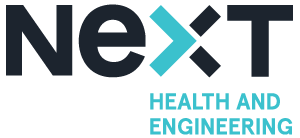Following the installation of new Siemens imaging equipment at the Nantes University Hospital last May, the public-private partnership between Siemens and the University Hospital has reached a new stage with the award of an industrial chair “IMRAM” in December 2021.
Nuclear imaging has experienced significant growth over the last 10 years in various fields of medicine, particularly in oncology. By mapping the whole body, PET coupled with CT or more recently MRI* has become a major innovative technology with multiple diagnostic, prognostic and theranostic applications in the context of precision medicine.
For the past 15 years, the Nantes nuclear medicine community has been structured around the Arronax cyclotron (a facility that produces radioelements), to develop interdisciplinary research involving doctors, physicists, chemists and biologists. Close collaborations have been established at regional level, in particular between the department of nuclear medicine of the Nantes University Hospital, directed by Prof. Françoise Kraeber-Bodéré and team 2 of the CRCI2NA research centre, directed by Prof. Michel Chérel.
More recently, the collaboration between these different teams was strengthened when the SIRIC ILIAD was accredited by the French National Cancer Institute, and more specifically within the ThARGET research programme, dedicated to nuclear medicine. This project is based on strong collaborations with industrial partners. Siemens is a major player in this field. A new Siemens digital PET-CT and PET-MRI equipment will be installed in May 2021 at the Nantes University Hospital as part of the IMRAM project.
The granting of the “IMRAM” Industrial Chair in December 2021 will support and increase this historic collaboration, with the development of a collaborative scientific research programme between academics and industry. In concrete terms, thanks to cohort studies, it will help develop new medical imaging analysis methods, as well as evaluate and refine the methods already developed by Siemens. Ultimately, the aim is to improve diagnosis, prognosis and therapeutic strategies for cancer.
PET (Positron Emission Tomography) is used to assess the biological functioning of the tumour, while MRI (Magnetic Resonance Imaging) and CT (Computed Tomography) are used to localise and measure it.

IMRAM Industrial Chair holder: Simon STUTE
Amount awarded: €475,000
Financial support: Piloted by NExT through state aid managed by the National Research Agency under the Programme d’investissements d’Avenir (reference ANR-16-IDEX-0007), the project receives financial support from the Pays de la Loire Region.




